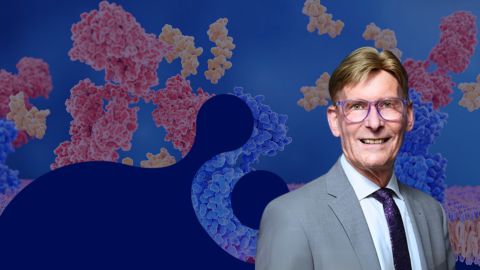Six ASBMB members elected to NAM
The National Academy of Medicine has elected a class of 100 new members, including six members of the American Society for Biochemistry and Molecular Biology. These new NAM members are exceptional scholars who have demonstrated outstanding professional achievement and commitment to service. The ASBMB members among the honorees are Craig Blackstone, Namandjé Bumpus, Peter Glazer, Laura Kiessling, Lisa Monteggia and Yang Shi.
These 2022 elections bring NAM’s total membership to more than 2,200, including 190 international members.

Craig Blackstone, chief of the movement disorders division in the neurology department at Massachusetts General Hospital and professor of neurology at Harvard Medical School, was recognized for identifying the cellular pathogenic mechanisms underlying hereditary spastic paraplegia and providing insight into the basic biology of the endoplasmic reticulum.

Namandjé Bumpus, chief scientist at the U.S. Food and Drug Administration and a professor of pharmacology at Johns Hopkins University School of Medicine, was recognized for foundational work in drug metabolism and antiviral pharmacology as well as translating fundamental drug metabolism studies to the prediction of patient drug responses.

Peter Glazer, professor and chair of therapeutic radiology at Yale School of Medicine, was recognized for discovering that tumor hypoxia causes genetic instability and IDH1 mutations suppress DNA repair in cancers, which cause vulnerability to radiation and PARP inhibitors. Glazer has developed novel drugs for cancer and gene editing, which has led to multiple cancer clinical trials.

Laura Kiessling, professor of chemistry at the Massachusetts Institute of Technology, was recognized for fundamental discoveries of protein-glycan interactions pertinent to immunity, inflammation, host-microbe interactions and human development.

Lisa Monteggia, professor of pharmacology at Vanderbilt University, was recognized for contributions to the neurobiology of emotion, pioneering work identifying a causal link between neurotrophin signaling and antidepressant action, and contributions to understanding the synaptic plasticity mechanisms underlying the therapeutic effects of psychiatric treatments.

Yang Shi, professor and director of epigenetics at Oxford University and a member of the Ludwig Institute for Cancer Research, was recognized for the groundbreaking discovery that histone methylation is reversible and discovery of the first histone demethylase.
Enjoy reading ASBMB Today?
Become a member to receive the print edition four times a year and the digital edition monthly.
Learn moreGet the latest from ASBMB Today
Enter your email address, and we’ll send you a weekly email with recent articles, interviews and more.
Latest in People
People highlights or most popular articles

Embrace your neurodivergence and flourish in college
This guide offers practical advice on setting yourself up for success — learn how to leverage campus resources, work with professors and embrace your strengths.

Survival tools for a neurodivergent brain in academia
Working in academia is hard, and being neurodivergent makes it harder. Here are a few tools that may help, from a Ph.D. student with ADHD.

Quieting the static: Building inclusive STEM classrooms
Christin Monroe, an assistant professor of chemistry at Landmark College, offers practical tips to help educators make their classrooms more accessible to neurodivergent scientists.

Hidden strengths of an autistic scientist
Navigating the world of scientific research as an autistic scientist comes with unique challenges —microaggressions, communication hurdles and the constant pressure to conform to social norms, postbaccalaureate student Taylor Stolberg writes.

Richard Silverman to speak at ASBMB 2025
Richard Silverman and Melissa Moore are the featured speakers at the ASBMB annual meeting to be held April 12-15 in Chicago.

Women’s History Month: Educating and inspiring generations
Through early classroom experiences, undergraduate education and advanced research training, women leaders are shaping a more inclusive and supportive scientific community.
